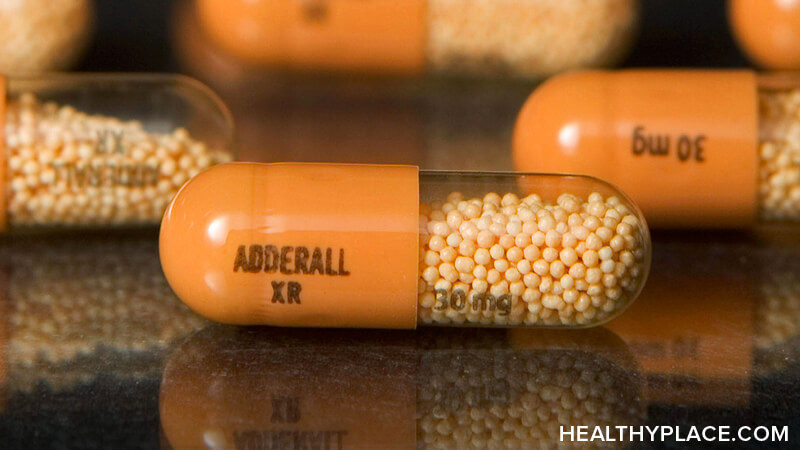What Happens When You Stop Taking Adderall?

Not everyone has positive results when taking medication for ADHD, and many wonder what happens when you stop taking Adderall. That is a good question to ask before stopping, as Adderall must be stopped in a certain way to avoid Adderall withdrawal symptoms.
Adderall is a central nervous system stimulant. It boost the effects of the brain’s neurotransmitters dopamine and norepinephrine, and in so doing, it helps people with ADHD concentrate and be less distractible and impulsive. Adderall is a legitimate treatment for adult ADHD. That doesn’t mean, however, that taking Adderall is right for everyone. Many people stop taking Adderall for ADHD, but you should never do it without first talking with your doctor.
Adderall has numerous unpleasant psychological side effects as well as physical side effects that can affect every system in the body. RxList, an authority on medications and supplements for both professionals and consumers, lists 30 distinct side effects of this stimulant.
Whether you want to avoid the harsh side effects of Adderall or you simply want to manage your ADHD without medication, quitting Adderol is possible, but it must be done properly.
What Happens When You Stop Taking Adderall?
Adderall withdrawal can happen without problems, or it could cause you to experience symptoms that can be quite miserable. What happens when you stop taking Adderall depends on how you stop taking Adderall.
Suddenly stopping Adderall results in what is known as the Adderall crash. Withdrawal symptoms suddenly appear, and they can cause significant discomfort. Adderall withdrawal symptoms are both physical and psychological in nature, and they can include:
- Insomnia
- Sleeping too much
- Appetite changes (usually excessive hunger)
- Headache
- Fatigue
- Muscle aches
- Tremors
- Seizures
- Physical and mental sluggishness
- Intense cravings for Adderall
- Depression
- Suicidal thoughts
- Anxiety
- Irritability
- Mood swings
- Lack of motivation
- Difficulty concentrating
- Panic attacks
- Phobias
- Paranoia
This list can seem intimidating. While these symptoms of Adderall withdrawal can and do happen, you can avoid them by getting off Adderall properly.
Quitting Adderall the Right Way
Because Adderall is a highly addictive drug even when you take it for ADHD as prescribed, it’s very important to taper off of it with the help of a doctor. Slowly weaning off of this medication under a doctor’s supervision will help you avoid or minimize Adderall withdrawal symptoms. Quitting Adderall cold turkey is dangerous and feels terrible.
This supervised, incremental decrease in dosage is often referred to as medical detox. In extreme cases of addiction, this is done in a treatment center. However, despite the fact that the brain does become dependent on Adderall when it’s used as an ADHD medication, getting off Adderall for ADHD typically doesn’t require inpatient addiction treatment. Your doctor will create a dose-reduction schedule, and you’ll see him or her for check-ups as you taper off.
Even when done right, the process of getting off Adderall can be difficult, both because of the withdrawal process and because you’re still dealing with your symptoms of adult ADHD. While challenging, this process doesn’t have to be nightmarish. There are things you can do to deal with the negative effects of Adderall withdrawal.
How to Deal with the Effects of Getting off Adderall
Some drugs have pharmaceutical treatments for the withdrawal process; unfortunately, Adderall is not one of them. There’s nothing medical to ease the tapering process, but that doesn’t mean you have to sit idly by, helpless, and just wait out the symptoms.
You can develop and use coping skills to help you deal with this challenge. Things that are helpful in stopping medication are
- Eating healthy and drinking plenty of water
- Maintaining a regular sleeping schedule, going to bed at the same time and getting up at the same time
- Doing calming activities and avoiding the use of electronics before bed
- Exercising regularly
- Keep a regular daily routine
- Be busy and stay active to distract yourself from cravings and other symptoms
- Attend support groups to get tips and encouragement
While it might feel like Adderall withdrawal drags on forever, in reality, it’s short-lived. The length of time it takes to complete the tapering process depends on how long you’ve been taking Adderall and how high the dosage is. Typically, the duration is anywhere from a few days to a few weeks, but it can be up to a few months. Physical withdrawal symptoms tend to disappear more quickly than psychological symptoms.
What happens when you stop taking Adderall? You might experience withdrawal symptoms for a while, but if you taper rather than quitting cold turkey, you’ll avoid the dreaded Adderall crash. And once the drug is out of your system, you will be free from the side effects of Adderall and ready to manage ADHD without medication.
APA Reference
Peterson, T.
(2021, December 20). What Happens When You Stop Taking Adderall?, HealthyPlace. Retrieved
on 2024, June 20 from https://www.healthyplace.com/self-help/adhd/what-happens-when-you-stop-taking-adderall



